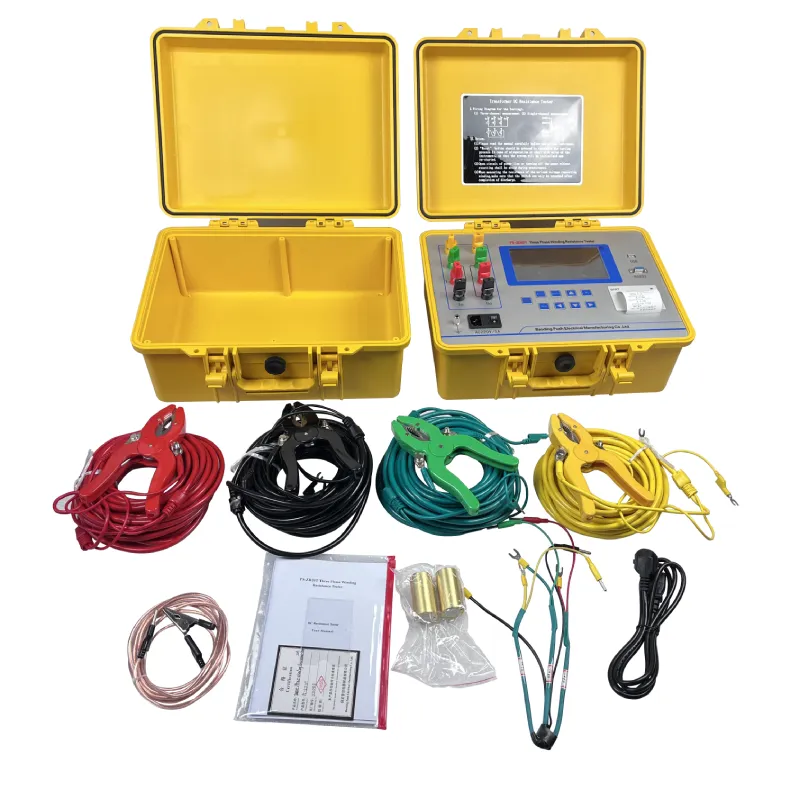 English
English


Exploring the Functionality and Applications of Tan Delta Testers in Electrical Insulation Assessment
Understanding Tan Delta Testers Essential Tools for Electrical Insulation Testing
In the world of electrical engineering, ensuring the reliability and safety of systems and components is paramount. One crucial aspect of this reliability is the insulation materials used in electrical equipment. Insulation can degrade over time due to various environmental factors, mechanical stress, and electrical overloading. To assess the condition of insulation and predict its lifespan, engineers often turn to Tan Delta testers.
What is Tan Delta Testing?
Tan Delta testing (also known as Power Factor testing) is a diagnostic technique used to evaluate the insulation properties of electrical components. It measures the dissipation factor of the insulation material, which helps in determining its condition. The term Tan Delta refers to the tangent of the angle in the electric circuit where the capacitive and resistive components interact. In practical terms, this measurement helps to quantify how much of the electrical energy is lost in the form of heat due to the insulation's imperfections, providing critical insights into its performance.
Key Principles of Tan Delta Testing
The Tan Delta tester works by applying a test voltage to the insulation under consideration. As the voltage is applied, the tester measures both the current flowing through the insulation and the voltage across it. From these measurements, it calculates the angle between the current and voltage waveforms. The tangent of this angle is the Tan Delta value. A low Tan Delta value indicates good insulation quality, while a higher value suggests increased losses and potential insulation failure.
Advantages of Tan Delta Testing
1. Early Detection of Insulation Failure Tan Delta testing can detect problems in insulation before they lead to catastrophic failures. By monitoring the Tan Delta values over time, engineers can identify trends signaling degradation in insulation quality.
tan delta tester

2. Non-Destructive Testing One of the most significant advantages of Tan Delta testing is that it is a non-destructive testing method. This means that testing can be performed without causing any damage to the insulation material, allowing for safe and efficient evaluations in service.
3. Comprehensive Analysis The test not only provides a numerical value but also offers insights into phase angle and capacitance, enabling a more thorough analysis of insulation performance.
4. Versatility Tan Delta testers can be used on a wide range of electrical equipment, from transformers and cables to motors and generators, making them highly versatile tools in electrical maintenance routines.
Applications in Industry
Tan Delta testing is widely utilized in various industries, including power generation, transmission, and distribution. Utilities often perform this testing on transformers and switchgear as part of their maintenance programs to ensure operational reliability. In the manufacturing sector, Tan Delta tests are critical for quality control of adhesives, varnishes, and other insulating materials, ensuring that they meet stringent regulations and performance standards.
Conclusion
As electrical systems become more complex and demanding, the importance of reliable insulation cannot be overstated. Tan Delta testers play an essential role in maintaining the health of electrical insulation, helping prevent failures that could lead to costly downtimes and safety hazards. By understanding and utilizing Tan Delta testing, engineers can significantly enhance the reliability and efficiency of electrical systems, ensuring they perform optimally for years to come. The knowledge gained from these tests is invaluable, and the importance of continual monitoring cannot be neglected in the pursuit of electrical safety and performance.
-
Differences between open cup flash point tester and closed cup flash point testerNewsOct.31,2024
-
The Reliable Load Tap ChangerNewsOct.23,2024
-
The Essential Guide to Hipot TestersNewsOct.23,2024
-
The Digital Insulation TesterNewsOct.23,2024
-
The Best Earth Loop Impedance Tester for SaleNewsOct.23,2024
-
Tan Delta Tester--The Essential Tool for Electrical Insulation TestingNewsOct.23,2024





